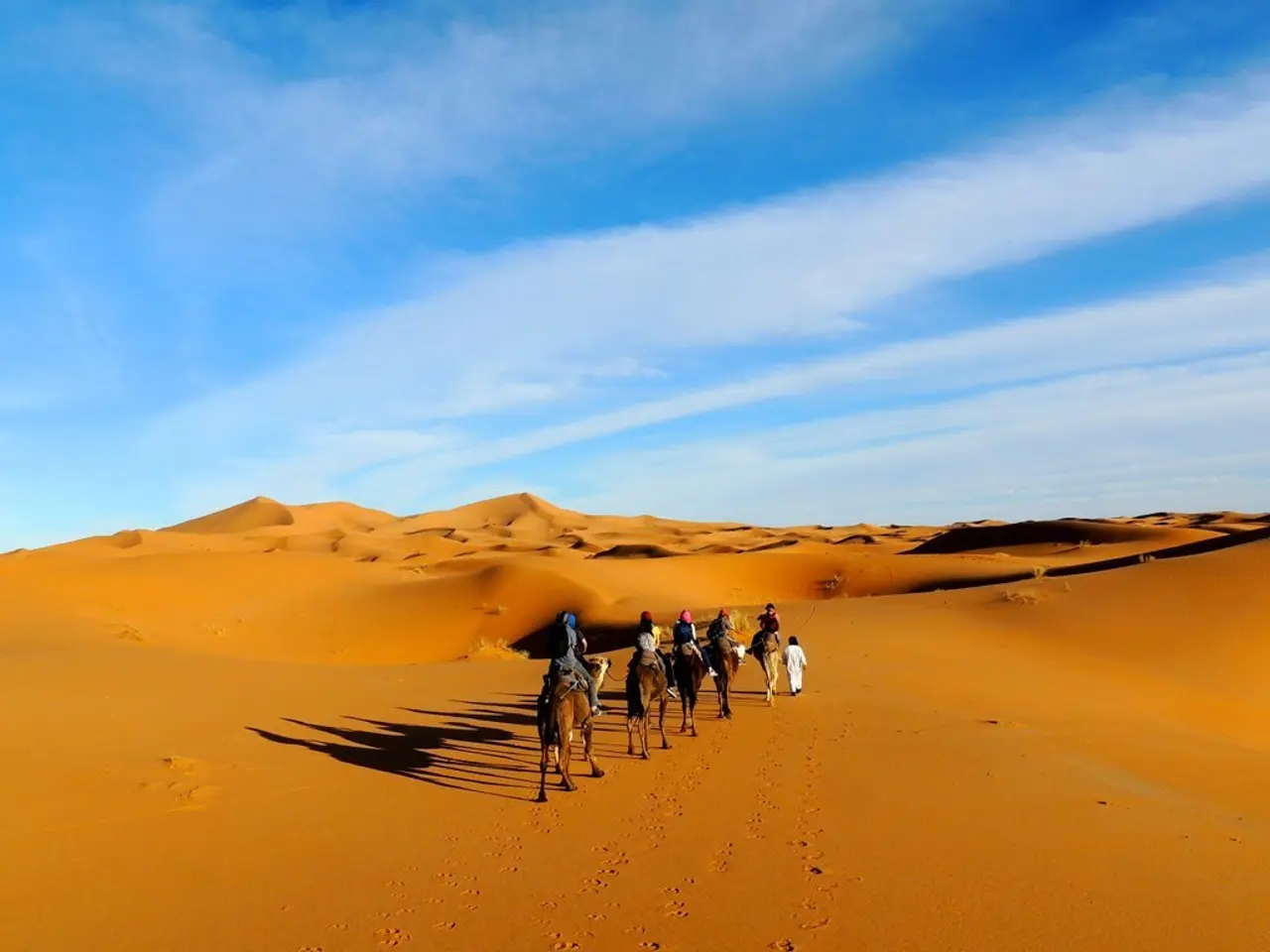Exploring the Thar Desert: Highlights, Entertainment, and Tricks for a Successful Journey
Exploring the Thar Desert: A Journey through Jaisalmer and Beyond
The Thar Desert, known as one of the most densely settled arid zones in the world, spans nearly 200,000 square kilometres across western Rajasthan. At its heart lies the vibrant city of Jaisalmer, famously known as the "Golden City". This ancient fortified city, founded in 1156 CE, boasts a yellow sandstone fort that shines golden at sunset, earning it a place among the world's few continuously inhabited citadels.
Jaisalmer, a gateway to the Thar Desert, offers a variety of ways to explore its unique landscapes. Connectivity is reliable around Jaisalmer and Bikaner, but weaker in remote dunes, ensuring you stay connected throughout your journey. Highways link Jaisalmer with major Rajasthani cities, making buses and taxis widely available for travel. Additionally, rail services connect Jaisalmer with Jodhpur, Jaipur, and Delhi, providing multiple transportation options. For those seeking a quicker route, Jaisalmer airport operates seasonal flights from Delhi and Jaipur.
For the adventurous, jeep safaris extend deeper into the desert, connecting abandoned villages and fossil parks like Akal. These safaris offer journeys from a few hours to several days, tracing old trade routes. Camel safaris are another popular choice, providing a more traditional means of exploring the desert. However, longer expeditions require physical readiness, so it's essential to prepare accordingly.
The Thar Desert is not just a vast expanse of sand; it's a cultural corridor that has linked India with Central Asia through centuries of caravan trade. Stepwells and tanks in the Thar Desert demonstrate centuries of adaptation to arid conditions, standing as testaments to the resilience of the people who call this desert home.
Local cuisine in the Thar Desert highlights the resilience of its inhabitants, with dishes like ker sangri ki sabzi and bajre ki roti showcasing the use of resilient crops and dried ingredients. Overnight camps near Sam, Khuri, and Osian offer bonfires, Rajasthani food, and performances by Manganiyar musicians and Kalbeliya dancers, providing a taste of the region's rich cultural heritage.
When it comes to accommodation, choices range from heritage hotels inside Jaisalmer Fort and havelis converted into guesthouses to desert camps offering tents near Sam and Khuri. Whatever your preference, you'll find a comfortable place to rest after a day of exploring the Thar Desert.
For those interested in wildlife spotting, the Desert National Park near Jaisalmer is the prime location. This park protects fragile desert ecosystems and is known for the critically endangered Great Indian Bustard. It also provides one of the best opportunities for desert wildlife photography in India.
In conclusion, Jaisalmer offers a unique blend of history, culture, and adventure, making it an ideal destination for travellers seeking an off-the-beaten-path experience. And while Bikaner and Barmer are alternate bases in the Thar Desert, each with forts, temples, and dune landscapes, Jaisalmer remains a popular choice due to its rich history, vibrant culture, and easy accessibility.
Remember to pack essentials such as cotton clothing for daytime, warm layers for cold nights, sunscreen, sunglasses, a scarf or hat, and sturdy footwear. Above all, come prepared to be amazed by the beauty and resilience of the Thar Desert and its people.
Read also:
- International cooperatives associated with OCOP (One Commune One Product) are actively exploring strategies to access and penetrate foreign markets.
- Federal health clinics in Maine seek restoration of withheld Medicaid financing, filing a lawsuit against the Trump administration over funding reductions.
- Tezos' Etherlink Broadens Its Gaming Offerings with Incorporation of Pikes Arena and Cricket Champions
- Depakote Cost in 2025: Discounts and Additional Savings Options







